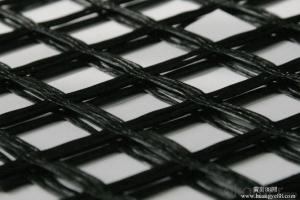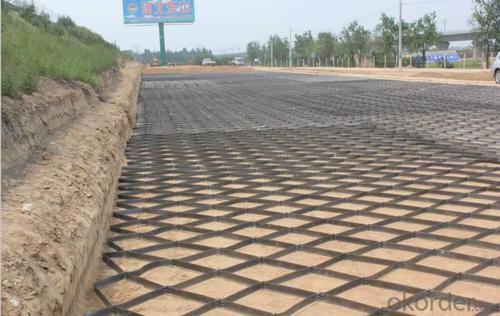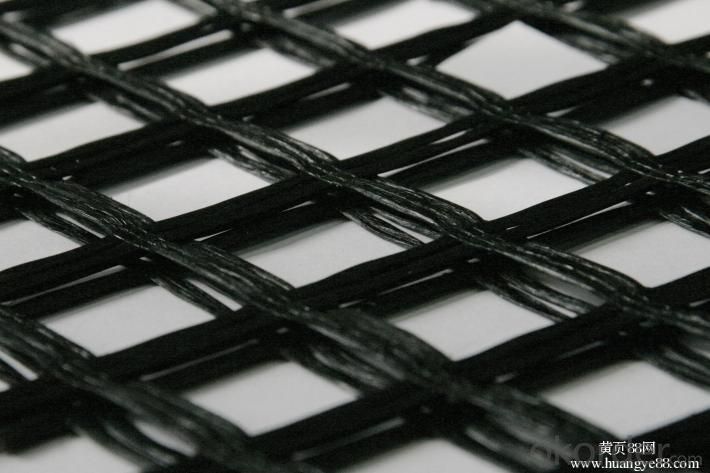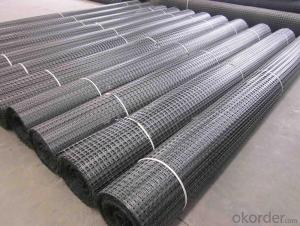Stable Access Routes Biaxial Plastic Geogrid for Road Reinforcement
- Loading Port:
- Qingdao
- Payment Terms:
- TT OR LC
- Min Order Qty:
- 30000 m²
- Supply Capability:
- 1000000 m²/month
OKorder Service Pledge
OKorder Financial Service
You Might Also Like
Structure of Biaxial Plastic Geogrid
Biaxial Plastic Geogrid is made in Polyester with their square apertures, high tensile strength and optimised geometry of nodes and ribs make them equal to any other similar material. The reinforcing action of Polyester Geogrids lies mainly in confining soil and increasing its shearing resistance by a process of interlocking between the square ribs and the soil. The load dispersal effect from the interlocking mechanism is highly effective and can reduce sub-base thickness and construction cost. Polyester Geogrids can be used with any kind of mechanical fill material. Two aperture size ranges are available for optimum matching with project fill.
Main Features of the Biaxial Plastic Geogrid
Light weight, high tensile strength, high modulus, low elongation and good toughness.
Corrosion resistance, no long-term creep, long life span.
Good physical and chemical stability and good thermal stability.
Resistant to fatigue cracking, high-temperature track and low temperature shrinkage cracking.
Delaying and decreasing crack reflection.
Light weight, high tensile, corrosion resistance
Road maintenance and reinforcement
Packaging & Delivery
| Packaging Details: | PP bags or PE film. Or Packed as customers' requests. |
| Delivery Detail: | 10-20days after the contract is effective |
Biaxial Plastic Geogrid Images


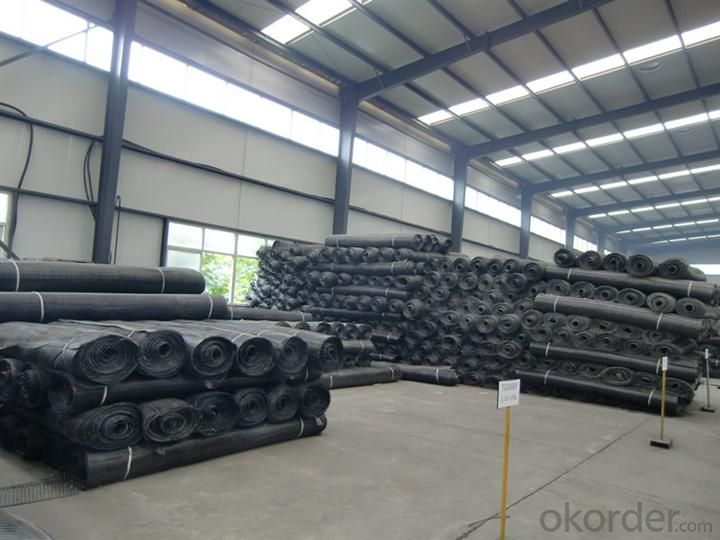
Biaxial Plastic Geogrid Specification
Converting old cement concrete road into composite road.
Restraining reflection cracking caused by block shrinkage.
Preventing and controlling the cracking caused by new and old combination and uneven settlement.
Road extension.
Reinforcement of soft soil foundation and overall strength of roadbed
Property | Test Method | TGSG 15-15 | TGSG 20-20 | TGSG 30-30 | TGSG 40-40 | |
Ultimate tensile strength(1) (kN/m) | MD |
ASTM D 6637 | 15 | 20 | 30 | 40 |
CD | 15 | 20 | 30 | 40 | ||
Elongation at maximum load (%) | MD | 13 | ||||
CD | 13 | |||||
Tensile strength at 2 % elongation (kN/m) | MD | 5 | 7.5 | 10.5 | 14 | |
CD | 5 | 7.5 | 10.5 | 14 | ||
Tensile strength at 5 % elongation (kN/m) | MD | 7 | 14 | 21 | 28 | |
CD | 7 | 14 | 21 | 28 | ||
Minimum Carbon Black | % | ASTM D 4218 | 2 | |||
FAQ
We have organized several common questions for our clients,may help you sincerely:
Q: How about your company?
A:Our company are one of the largest geosynthetic products supplier in the world.We have the products experience more than 20 years.Already export to USA/Germeny/Australia/Zambia/Brazil etc.more than 20 countries.Almost 10years.Our products including Geocell/Biaxial Plastic Geogrid/Geomembrane/Geotextile/Geonet etc.
Q.Does your products have good qualitity?
A:Yes,we have do many big projects such as the 2008 Beijing Olympic BIRD NEST. Divert water from the south to the north project. And our products have CE certificate also.
Q:How long can we receive the products after purchase?
A:In the purchase of product within three working days, We will arrange the factory delivery as soon as possible. The pecific time of receiving is related to the state and position of customers.Commonly 15-20 working days can be delivery.
- Q: Are geogrids resistant to UV radiation?
- Yes, geogrids are generally resistant to UV radiation.
- Q: What is the difference between bidirectional geogrid and unidirectional high strength geogrid
- The uniaxial geogrid is uniform holes in the polymer extrusion molding, and then heated and shaped mesh material, according to the different raw materials can be divided into one-way one-way polyethylene polypropylene geogrid, geogrid
- Q: Can geogrids be used in mining operations?
- Yes, geogrids can be used in mining operations. Geogrids are commonly used in mining to reinforce soil and rock structures, provide stability to slopes and walls, and prevent erosion. They can also be used to improve the load-bearing capacity of roads and foundations, which is essential in mining operations.
- Q: Are geogrids suitable for use in green roof systems?
- Yes, geogrids are suitable for use in green roof systems. Geogrids provide stability and reinforcement to the roof system, preventing soil erosion and promoting the growth of vegetation. They also help distribute the weight evenly, making the green roof more structurally sound.
- Q: How do geogrids help in reducing maintenance costs?
- Geogrids help in reducing maintenance costs by providing reinforcement to soil structures, such as retaining walls or roadways, which helps them withstand heavy loads and prevent soil erosion. This reduces the need for frequent repairs or replacements, leading to cost savings in the long run. Additionally, geogrids improve the overall stability and longevity of the structure, minimizing the need for ongoing maintenance and maintenance-related expenses.
- Q: How do geogrids improve the performance of flexible retaining walls?
- Geogrids improve the performance of flexible retaining walls by providing reinforcement and stability to the soil behind the wall. They help distribute the lateral pressure from the retained soil, reducing the risk of wall failure. Additionally, geogrids increase the overall strength of the wall, allowing it to withstand greater loads and forces.
- Q: What are the specifications of the geogrid for road use?
- Plastic grille, fiberglass grille...... There are many kinds of specifications for each grid
- Q: What is the meaning of the highway geogrid gsl50/hdpe
- Biaxial tensile plastic geogrid material is PP polyethylene, and I hope to help you, I am also a manufacturer of geogrid, information contact, if in doubt, please contact, hope to communicate with you, learning.
- Q: High density polyethylene one-way geogrid, tensile yield of 20kn/m
- Material is high density polyethylene material
- Q: Biaxial tension geogrid
- In addition, there are steel plastic grille, fiberglass geogrid and so on
Send your message to us
Stable Access Routes Biaxial Plastic Geogrid for Road Reinforcement
- Loading Port:
- Qingdao
- Payment Terms:
- TT OR LC
- Min Order Qty:
- 30000 m²
- Supply Capability:
- 1000000 m²/month
OKorder Service Pledge
OKorder Financial Service
Similar products
Hot products
Hot Searches
Related keywords





